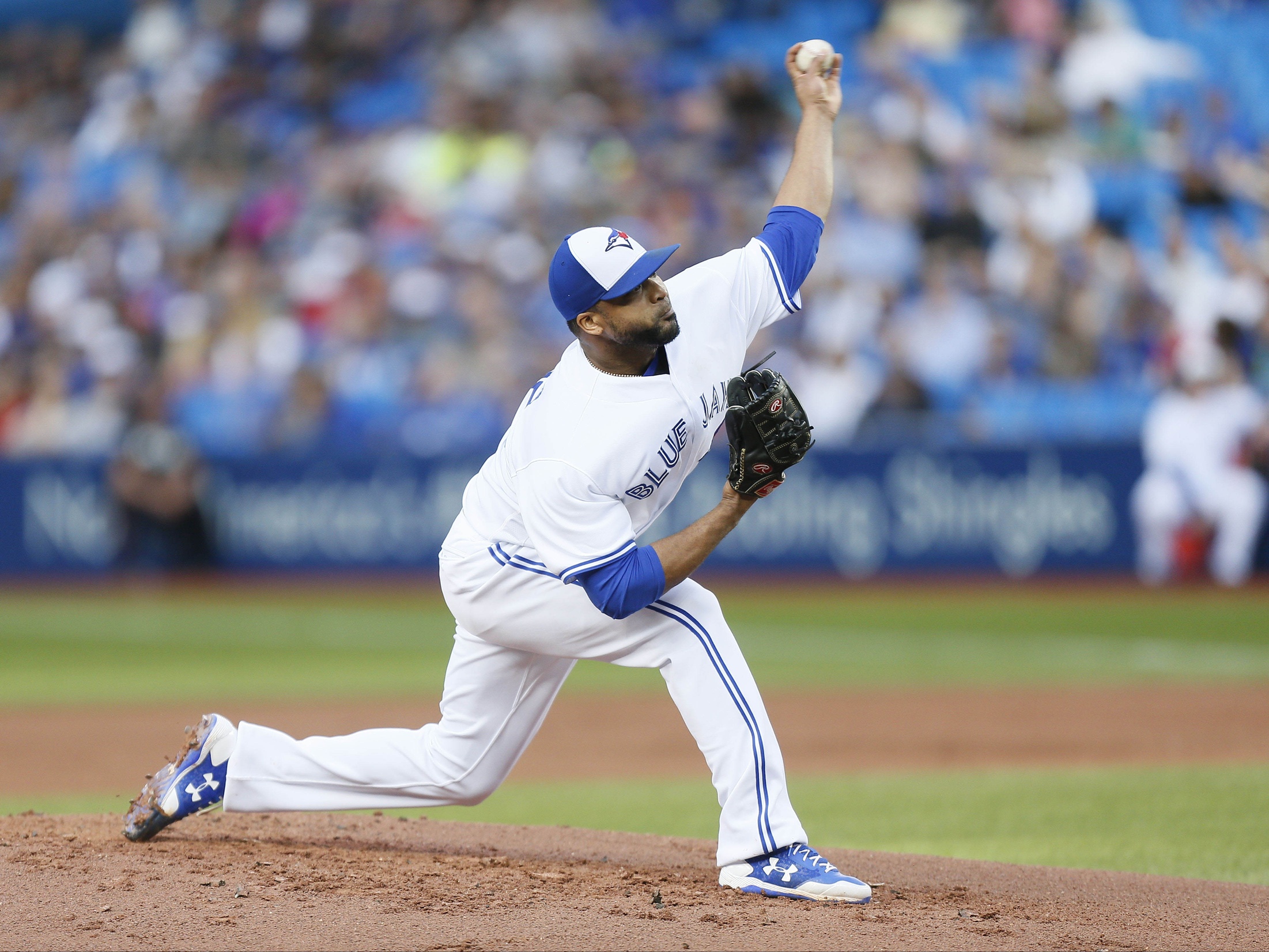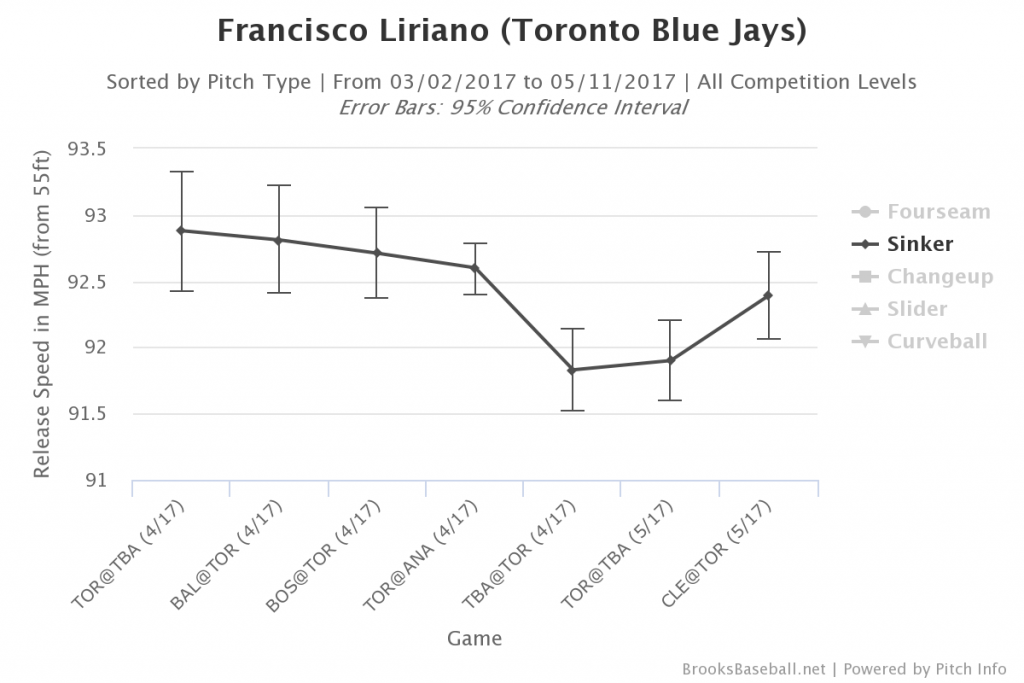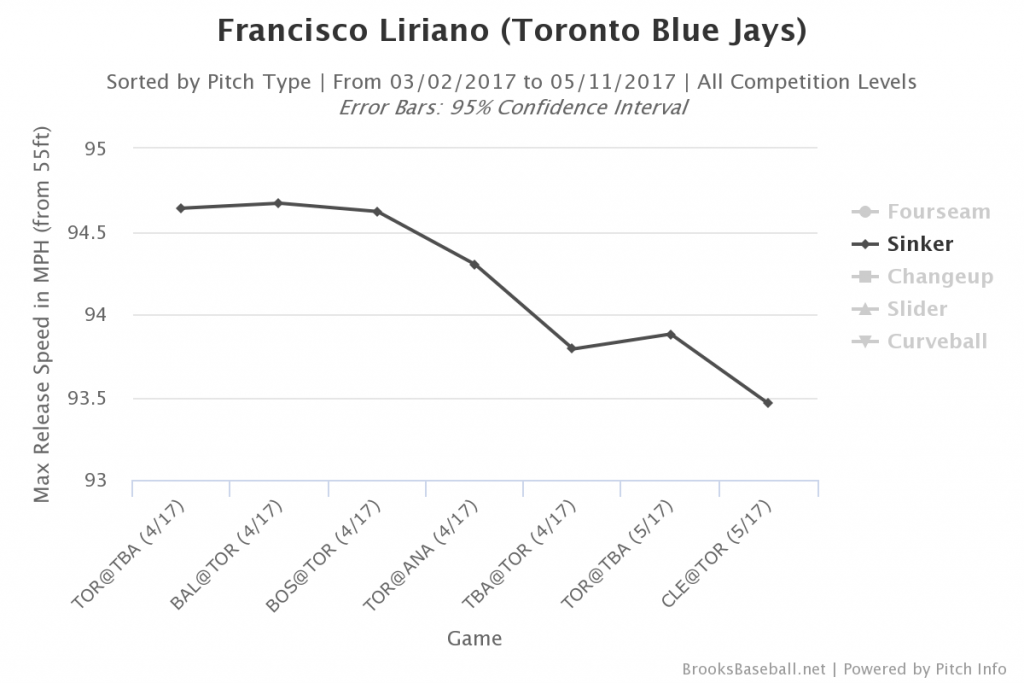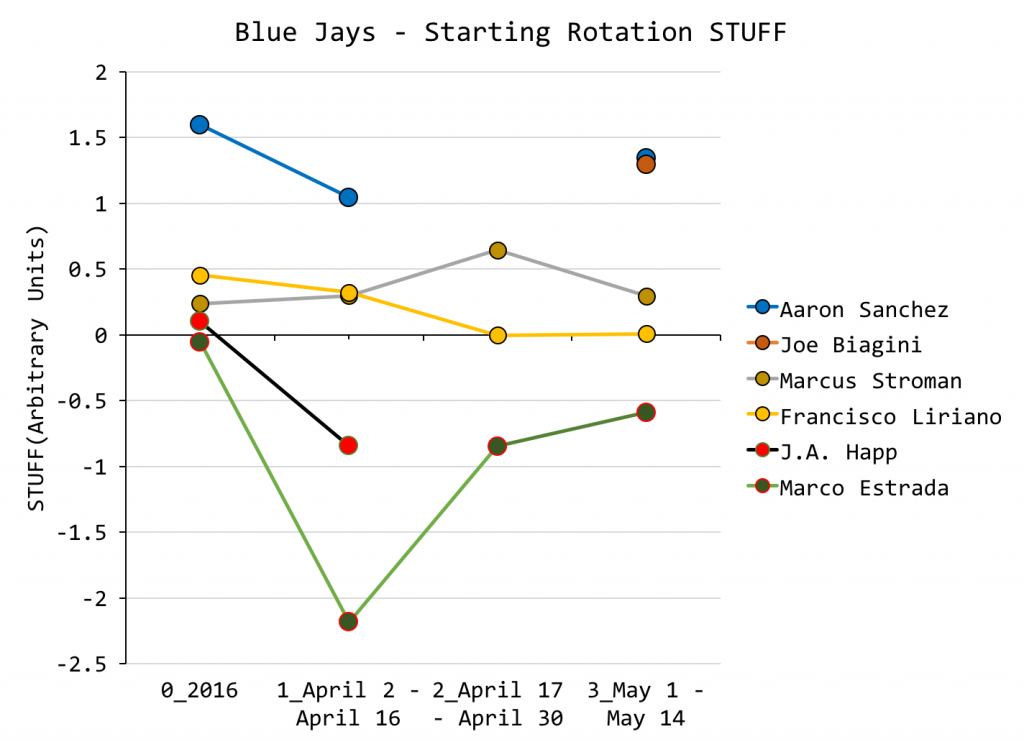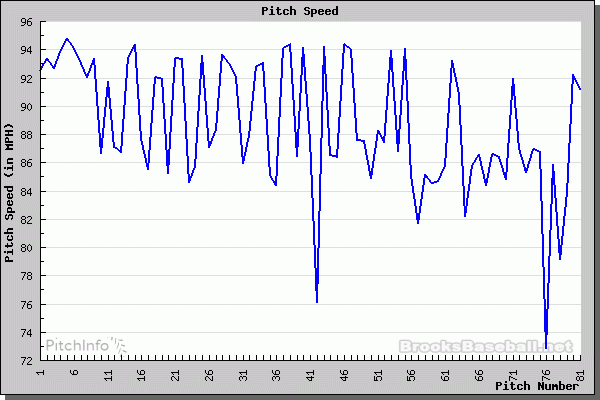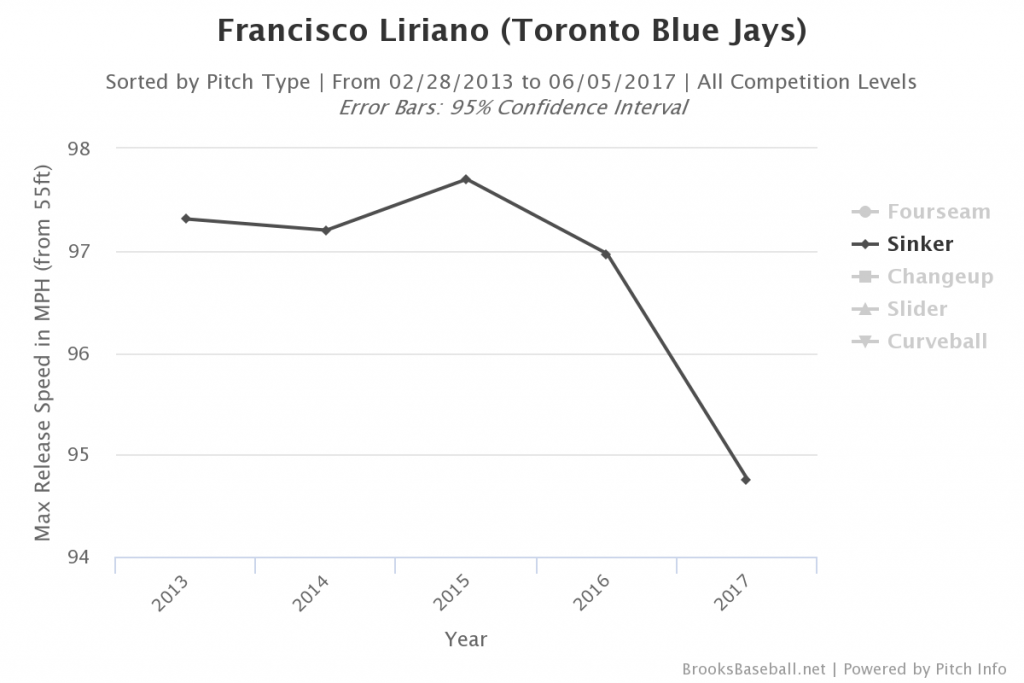The Blue Jays beleaguered starting rotation got some reinforcement this week with the returns of J.A. Happ and Francisco Liriano. Happ made it through five innings against the Reds and Liriano lasted into the sixth against New York.
Happ wasn’t exactly sharp, but with just one rehab outing under his belt, that wasn’t overly surprising. In particular, however, it was a welcome return to form for Liriano. He allowed just two runs against the very powerful, very righthanded Yankees offense. He also struck out five and only walked two while allowing two runs. All in all, it was a very good outing.
In his two starts before going on the DL, Liriano struggled rather heavily, allowing ten runs and eight walks across just 5 2/3 innings. That left him with three starts in which he didn’t make it past the fourth inning, allowing 15 runs. In his other four pre-DL starts, he allowed a total of five runs.
That’s somewhat par for the course when looking at Liriano’s career. The mercurial lefty has always mixed in the sublime with the maddening. It’s what you get when you have a pitcher whose stuff is as tough to hit as Liriano’s, but who struggles mightily with control; when he’s on he’s unhittable. When he’s not, it’s like he belongs in the low minors.
So the question — posed to me on a recent episode of the Flags Fly Forever podcast — becomes: what do we expect from Liriano going forward? How much of his recent struggles were due to his being hurt and how much of it was Francisco being Francisco?
To answer the second question first, it appears as though the injury was taking a rather dramatic toll on Liriano. While he is always wild at times, it also looks to have caused some changes in his profile. As someone who normally posts excellent groundball rates (52.5 percent over the previous three years), Liriano was actually giving up more balls in the air in the early going this year (47.4 percent groundball rate). His strikeout rate (21.6 percent) was also the lowest it has been since 2011 with the Twins (19 percent). That suggests some change in his pitching that was beyond the norm:
As you can see above, Liriano had a rather dramatic dip in his velocity over his last few starts before going on the DL (Note: sinker is isolated because Liriano throws only 5% four seamers). He went from averaging 92.7 mph to 91.8 in his first start against Tampa. He got back up to 92.3 mph in his last pre-DL outing, but even that was something of a mirage. He wasn’t throwing harder than the previous two starts, he was just showing less variance in his speed. The better indicator is actually peak velocity:
That last start where his fastball appeared to rebound actually had the lowest peak velocity Liriano has shown all season. At 93.46 mph, Liriano was over one mile per hour slower than his first few outings of the year. This is showing up in the results as well, as batters are slugging .673 against his fastball. That’s a career worst and easily the highest since 2010.
Liriano’s fastball was clearly diminished, but that wasn’t the only issue. While the velocity on the sinker fell, the changeup velocity stayed basically the same. With the loss of separation between the two offerings, any deception pretty much vanished. All of this shows up in Mike Sonne’s third stuff metric of the season (the metric looks not just at velocity and movement, but also at pitch separation):
Liriano went from a STUFF rating of around 0.3 in his first couple of weeks down to -0.06 just before going on the DL. Dr. Sonne has often said that a drastic fall in a pitcher’s stuff can suggest that an injury has either already occurred or is on the horizon and it certainly seemed to apply here. To make it short, Liriano wasn’t himself and he paid for it in his performance.
So again, what do we expect going forward? Well Liriano certainly gave us some positives on that front in his last outing:
Against the Yankees on Friday, Liriano’s average and peak velocities were the highest they’ve been all season. That alone suggests that his arm is clearly feeling better than it was before. This also may have aided in the reduction of walks. Not only does a healthy arm make it much easier to throw strikes (as your body is not fighting itself on the delivery), but the improved fastball also lowers reaction time for hitters.
The stuff was better and Liriano held down a great lineup. Heck, he even gave up his two runs only once some fatigue had set in and his velocity started to fall:
All of that is clearly very encouraging, but Liriano isn’t out of the woods yet. Like Happ, Liriano just had the one minor league rehab outing. He wasn’t out nearly as long as Happ (Liriano last started May 10, Happ April 16) so the sharpness wasn’t as much of a concern, but some arm strength issues still remain. While Liriano was at his season peak velocities in his return, he’s still well off the pace for his career numbers:
The 93.15 mph average velocity from Liriano’s last outing is reasonably close to the 93.21 from 2015 (he was at 93.53 in 2014 and 93.47 in 2016), but the max velocity is still way down from what he could do the past few years.
The good news is that even in those other years, Liriano had some outings where his fastball was never as hard as the 94.76 mph from this past Friday. So we’re going to have to watch how Liriano’s velocity looks over the next few starts. If he starts hitting the occasional 96-97 on the gun, then we can probably expect much of what the league has seen from Liriano since 2013: an ERA in the mid 3.00s, a DRA even better than that, a bunch of strikeouts and bunch of groundballs, and just the occasional blowup start. Basically, a very capable number three starter.
If he doesn’t, Liriano still has the weapons to succeed but he may just look more like a four or five than someone who should be starting over Joe Biagini.
Lead Photo © John E. Sokolowski-USA TODAY Sports
